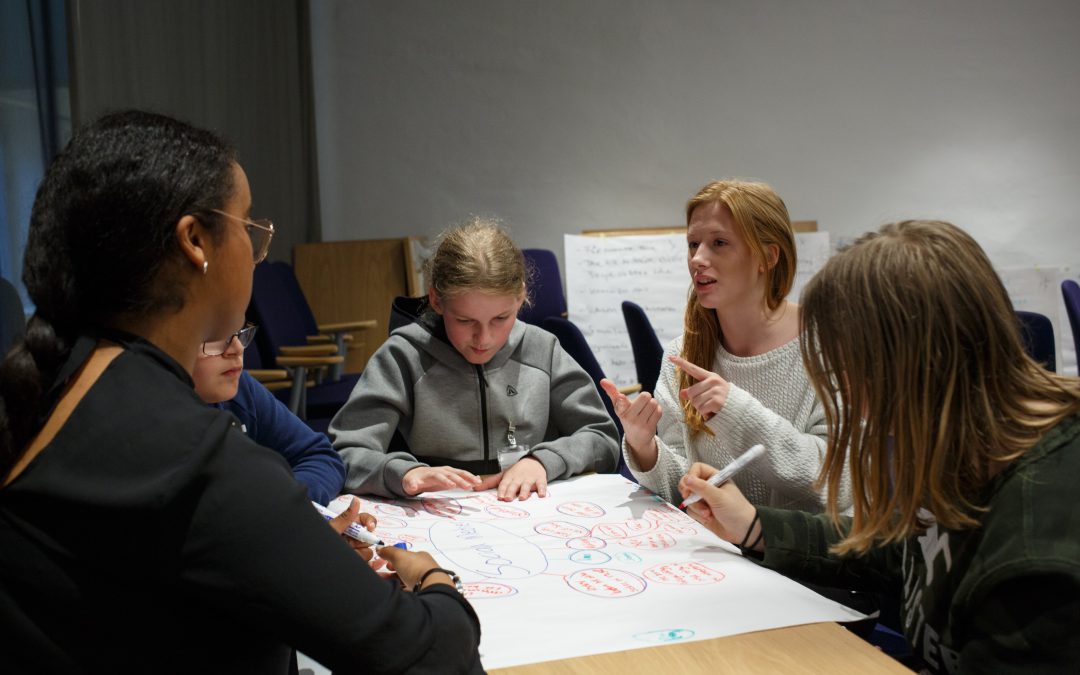Bullying can take several different forms, and it can sometimes be difficult to spot. It’s important to be open about bullying, especially within a classroom. If students learn what kinds of actions, words and behaviors could be hurtful to their peers, bullying might be prevented. Students should also know how to spot and report bullying, whether they’re a victim or a bystander. Below are some school bullying prevention plans that work for multiple grade levels.
Hands-on Activities
When discussing bullying, it can be helpful for the students to participate in an immersive activity. This experience can help hold the attention of students and make the lesson more memorable. One option is having the students act out scenarios where bullying occurs. Through acting, the students can understand the variety of ways in which bullying exists. They can also understand the perspective of the victim. This is influential, especially if a student watches their friend be a victim in a scenario. It can help students understand the effect of bullying and discourage that behavior in the future.
An activity can also be as simple as encouraging students to interact with people from different races, classes and backgrounds. Ask students to get into small groups, preferably with diverse perspectives. Then, tell the groups to discover and list 10 similarities everyone in the group shares and 5 things unique to each individual. The students will quickly learn that it is much easier to find similarities than differences. Teachers can encourage students to celebrate their differences, but still work together to create a unified classroom.
Videos
Visual aids are also a great resource to use when discussing bullying. This allows students who might be victims of bullying the opportunity to empathize with a character on screen. Depending on the time available, teachers can screen a short film such as Daisy Chain. This film follows a young girl whose love of daisies is originally something that her peers tease her for, but then she uses the daisies to beautify a local park. She is able to make the community a better place for everyone, including her bullies. There are also several feature length films, such as Cyberbully, that highlight some of the different ways that someone can be bullied, both in and outside of the classroom.
Socializing
Teaching Tolerance created the Mix It Up at Lunch Day program in 2001. Since then, it’s become a movement, and schools across the nation participate every year. The idea of this movement is that students sit with someone new at lunch on Mix It Up at Lunch Day. Some simple ways to keep the lunch fun are decorations, icebreakers, games and activities. Then, follow up the lunch with a group discussion and evaluation with the students. Teachers can ask what the students learned about their new friends and how this experience might help them approach someone new in the future.
Student Presentations
Another preventative plan is assigning students a short research assignment on the different facets of bullying. This can include cyberbullying, emotional words and phrases, tolerance, or signs of bullying. You can even ask students to make their own prevention plans. Then, students share their projects with the class and learn from each other.
Reporting Bullying
Students need to be able to feel safe to report bullying. This can be accomplished through teachers holding office hours so students can come in and talk about any problem, whether it be homework or bullying. Some students may not be comfortable reporting bullying face-to-face, so providing an anonymous opportunity for students to report bullying is also important. A student can leave a note on the teacher’s desk or in an anonymous reporting box. Or, the school can even have students use a smartphone app designed for reporting. That way, students can feel protected by anonymity and do the right thing. On the school’s side, LearnSafe software helps schools to identify and address cyberbullying, threats, and safety issues. This allows administrators, teachers, and School Resource Officers to intervene before it’s too late, preserving a safe learning environment for all students.
Text by Katherine Polcari


